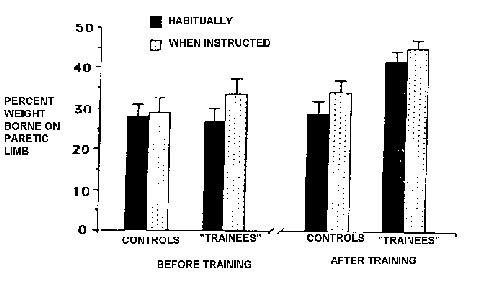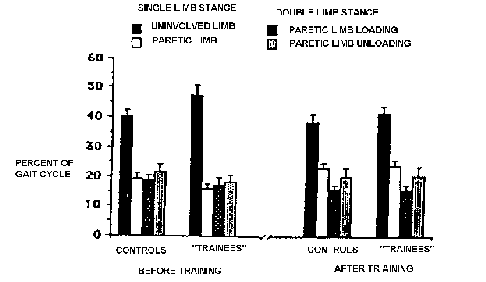Adaptive training
Therapists often adapt tasks, or teach tasks in parts, assuming the learner can reassemble or transfer the adapted task or partitioned task to another task or context. This assumption is not always correct, as in this example from:
Winstein, C.J., Gardner, E.R., McNeal, D.R., Barto, P.S., & Nicholson, D.E. (1989). Standing balance training: Effect on balance and locomotion in hemiparetic adults. Archives of Physical Medicine & Rehabilitation, 70, 755-62.

| Patients bore weight more symmetrically after a CVA when they adhered to a balance training regime.
|
|---|

| However, patients did not increase "single limb stance duration," the time spent on paretic limb during walking.
|
|---|
Strategies for successfully partitioning tasks include:
- Segmentation
- Fractionation
- Simplification
Wightman, D.C., & Lintern, G. (1985). Part-task training for tracking and manual control. Human Factors, 27, 267-283.


